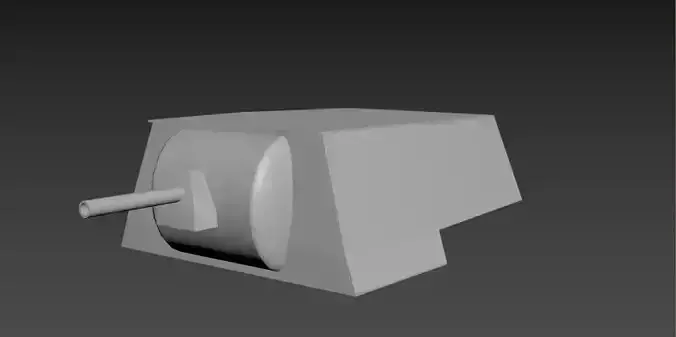1/22
The need to create a heavy tank with anti-cannon armor was well understood in the USSR. According to Russian military theory, such tanks were necessary to break into the enemy's front and organize a breakthrough or overcome fortified areas. Most of the armies of the developed countries of the world had their own theories and practices of overcoming the powerful fortified positions of the enemy, experience in this was acquired during the First World War. Such modern fortified lines as, for example, the Maginot Line or the Siegfried Line were considered even theoretically insurmountable. There was a misconception that the tank was created during the Finnish campaign to break through the Finnish long-term fortifications (Mannerheim line). In fact, the tank began to be designed at the end of 1938, when it finally became clear that the concept of a multi-turret heavy tank, like the T-35, was a dead end. It was obvious that the presence of a large number of towers, although it is an advantage in firepower, inevitably entails side effects in the form of a complication of the design and, as a consequence, its rise in price, production speed and less reliability. And the gigantic dimensions of the tank only make it heavier and unmasked and does not allow the use of thick enough armor. The initiator of the creation of the tank was the head of the ABTU of the Red Army Corps Commander DG Pavlov.
At the end of the 1930s, attempts were made to develop a tank of reduced size (compared to the T-35), but with thicker armor. However, the designers did not dare to abandon the use of several towers: it was believed that one cannon would fight the infantry and suppress firing points, and the second must necessarily be anti-tank - to combat armored vehicles.
The new tanks created under this concept (SMK and T-100) were twin-turreted, armed with 76mm and 45mm cannons. And only as an experiment, they also developed a smaller version of the SMK - with one turret. Due to this, the length of the machine was reduced (by two road wheels), which had a positive effect on the dynamic characteristics. Unlike its predecessor, the KV (as the experimental tank was called) received a diesel engine. The first instance of the tank (U-0) was manufactured at the Leningrad Kirov Plant (LKZ) in August 1939. Initially, the leading designer of the tank was A.S. Ermolaev, then N.L. Dukhov.
On November 30, 1939, the Soviet-Finnish war began. The military did not miss the opportunity to test the new heavy tanks. The day before the start of the war (November 29, 1939), the SMK, T-100 and KV went to the front. They were handed over to the 20th Heavy Tank Brigade, equipped with T-28 medium tanks.
The first battle of the KV took on December 17 during the breakthrough of the Khottinen fortified area of the Mannerheim line.
REVIEWS & COMMENTS
accuracy, and usability.






















